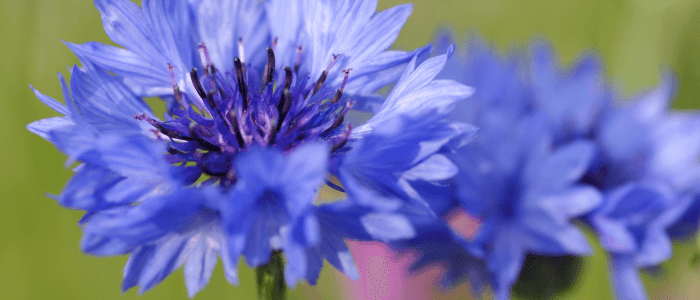Historical Significance and Cultural Importance:
Cornflower, also known as bachelor's button, is a charming blue flower that has graced European fields and gardens for centuries. Its name is derived from its

traditional habitat—the cornfields of England—and its vibrant blue petals have been used to adorn homes and in festivals as garlands. In herbalism, cornflower has been utilized for its supposed soothing properties, especially for the eyes, and has often been a component in tea blends and tinctures.
Recipe: Serene Blue Cornflower Tea Blend
This tea blend combines the beauty and tranquility of cornflower with other complementary herbs from Sacred Plant Co, offering a visually stunning and relaxing brew.
Ingredients:
- Cornflower Petals - 1 teaspoon
- Lemon Peel - 1 teaspoon
- Catnip Herb - 1/2 teaspoon
- Lavender Flowers - 1/2 teaspoon (optional for added relaxation)
- Hot water - 2 cups
Directions:
- Combine: In a teapot, mix together the cornflower petals, lemon peel, catnip herb, and lavender flowers (if using).
- Infuse: Pour the hot water over the herbs, ensuring they are fully submerged.
- Steep: Cover and allow the tea to steep for about 5-7 minutes.
- Strain: Strain the petals and herbs from the tea into cups.
- Enjoy: Sip the tea slowly, embracing the calming effects and the beautiful hue imparted by the cornflower petals.
Health Benefits:
Cornflower petals are known for their anti-inflammatory properties, particularly beneficial for eye irritation. Catnip may offer a calming effect, often used to ease stress and anxiety. Lemon peel adds a vitamin C boost, and lavender can enhance the blend's soothing qualities.
Culinary Tips:
The vivid blue petals of the cornflower make a stunning garnish for salads, desserts, and cocktails. They are also used to add color to potpourris or as a natural fabric dye.
Reflecting on Cornflower Petals:
Cornflower's striking blue petals not only bring aesthetic pleasure but also offer a gentle reminder of the wildflower meadows of Europe. Their use in traditional medicine may be less common today, but their presence in modern herbal teas and culinary creations keeps the legacy of this beautiful bloom alive.





